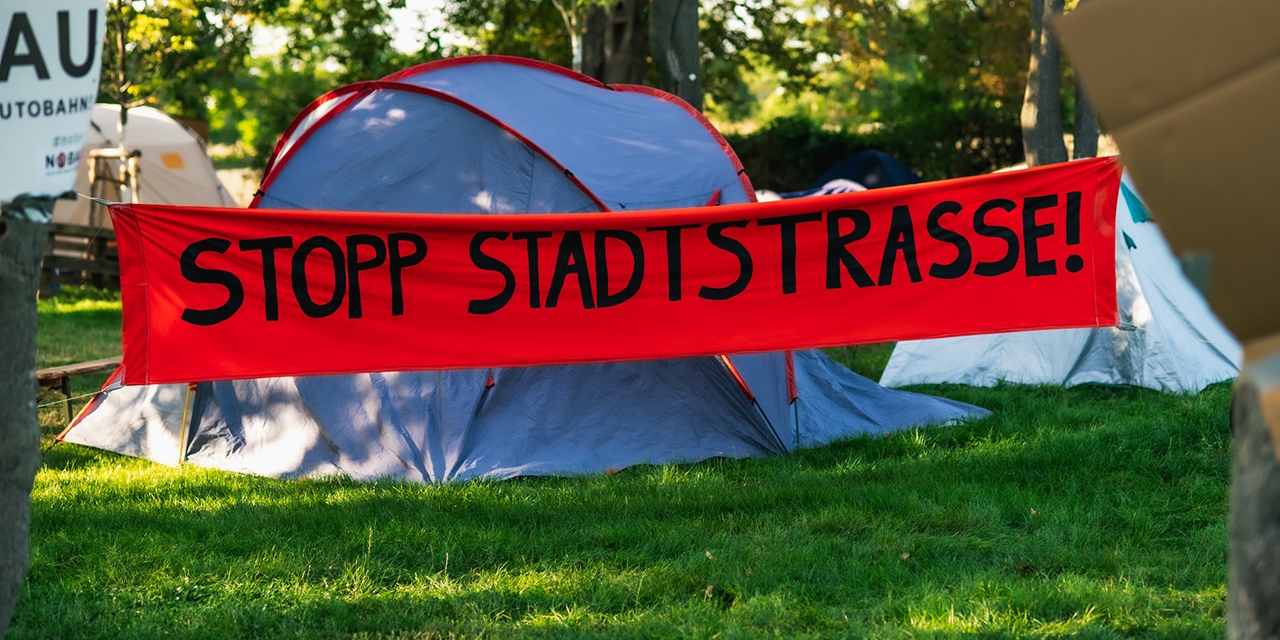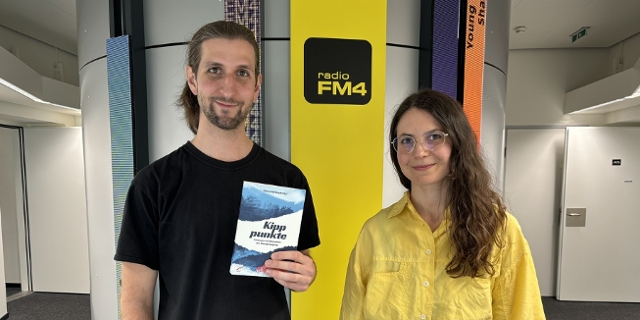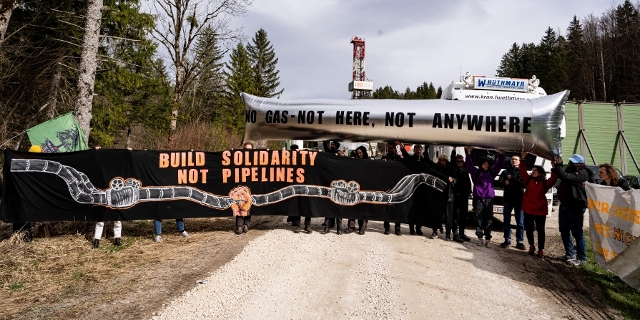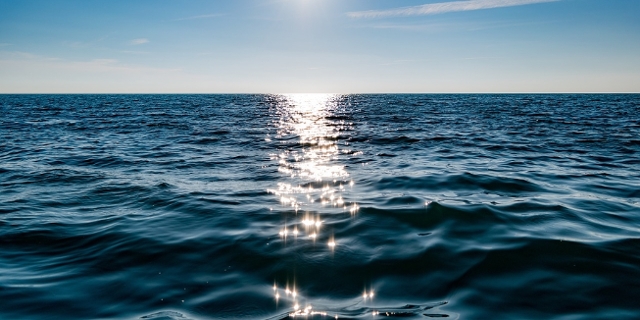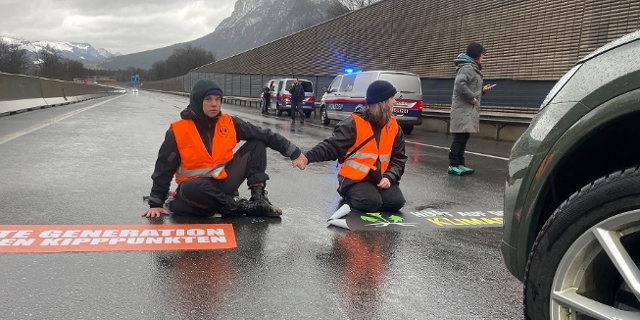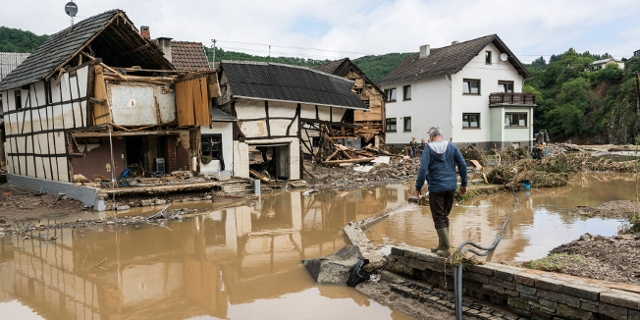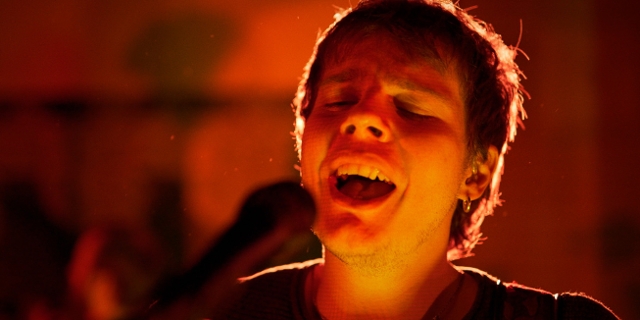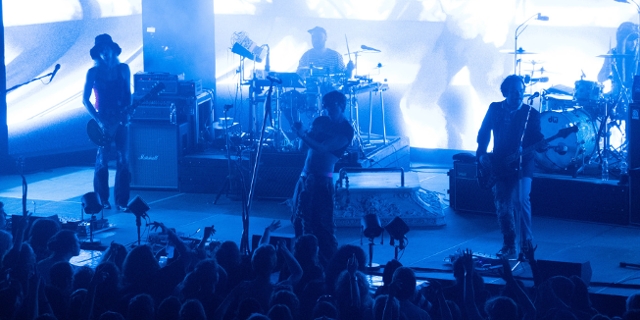„We will be more free. We will have less stress“
„We will be more free. We will have less stress. We won’t have a motorway type of road but rather smaller roads where buses and trams run at regular intervals. There will be bike lanes that are also feel safe enough for children and elderly people to ride. There will be more pedestrian crossings and wide pavements. There will be less air pollution and therefore less illness. And there will be fewer carbon emissions“
When Agnes Zauner, the director of Global 2000 outlines her vision of urban development in the Donaustadt in an imagined future where the authorities have decided against building the controversial Stadtstrasse 4-lane highway, a dreamy look comes over her face.
And this is why this contentious issue is so important. Two competing visions of the future have come face to face; and both sides say there is no time to lose.
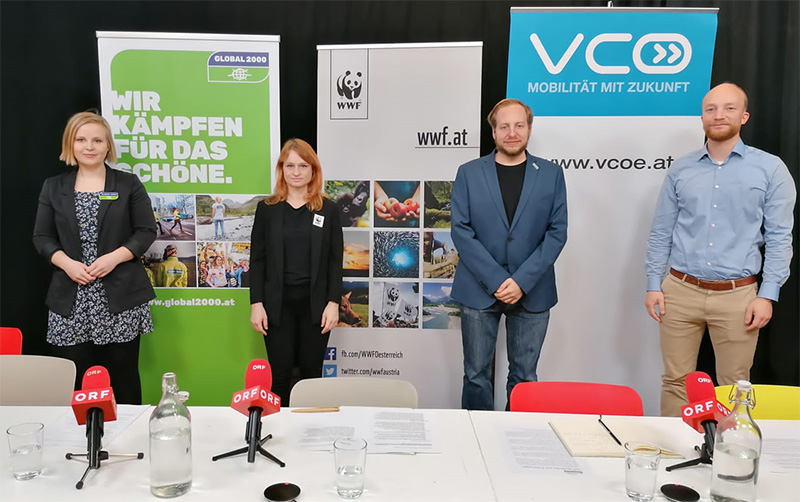
Global 2000 / Annette Stolz
Agnes Zauner (Geschäftsführerin GLOBAL 2000), Maria Schachinger (WWF Österreich), Georg Schamschula (Ökobüro), Michael Schwendinger (VCÖ)
The discussion has become even more heated this week after critics of the projects received letters from a law firm acting on behalf of the city government threatening them with huge fines. Children found these letters in their mail boxes as did university traffic experts such as the Vienna Technical University’s Ulrich Leth who says he has never even been to the occupied building sites where young activists have build a protest camp.
Is it a choice between social housing or the climate?
Agnes Zauner’s vision is also answering a direct challenge from the SPÖ-led city government. Vienna mayor Michael Ludwig has complained that the opponents of the Stadtstrasse project are good at saying „no“ but have been offering no viable alternatives. City officials have criticised both the protest camp activists and the coalition of NGOs, including Global 2000, who back their aims. One city officials called the NGOs „Verhinderer“ or „obstructionists“.
Ulla Sima, the councilor for town planning and mobility says the Stadtstrasse project is all about developing more living space in the Donaustadt, a site of the new residential projects on the growing city’s green edges: „If we are going to build flats for 60,000 people,“ she has said, „we are going to need a high level road.“
„We need to offer people viable alternatives“
Michael Schwendinger of the VCÖ, a mobility association, disagrees. He argues that the four-lane highway would endanger Vienna’s own pledge to reduce private car traffic from the current 27% to 15% by 2030 and to reach carbon neutrality by 2040. He says new urban development projects such as the ones in the Donaustadt are a prime chance to change the mobility habits of the population.
We can’t wish away the climate crisis by ignoring it and carrying on as usual in the mobility habits we have got used to. Therefore these new neighbourhoods could be see as sort of prototype experiment in how we will all have to learn get around in the future if we are to avoid climate meltdown. Can we make our cities climate fit or can’t we?
Schwendinger insists that more apartments don’t automatically mean more private cars on the road. „We need to offer people viable alternatives so they can get around without using a private cars. This means investing in the networks for public transport, cycling and walking.“
Indeed this week The European Commission issued a new report elevating cycling and walking to a EU-wide priority.
At a press conference to present the package, European Commission Executive Vice-President Frans Timmermans said that “the new urban mobility framework specifies in detail how cities are going to increase zero-emission public transport, roll out more and better infrastructure for walking and cycling, and green the cars.” Timmermans insists the whole package, will set European mobility “on track for a sustainable future.”
A Proud Culture of Housing Innovation
Schwendinger points to Vienna’s proud history. 100 years ago, the Austrian capital lead the world in building social housing. Now it is time he says for the city to defend and update that reputation by building new „eco-social housing“ and an post-Paris Climate Agreement mobility plan must be part of that concept. The world has changed since we set ourselves those goals in 2015, so plans drawn up before them must be adapted to a new greener future.
The UVP - Environmental Impact Assessment. Can it be altered or updated?
The city government has argued that an environmental impact assessment has already been conducted and re-starting that process would delay the development of the area potentially causing a housing crisis. Gregor Schamschula, an environmental lawyer at the ÖKOBÜRO says this is a not true.
„You can change and should change the assessment. A simple ammendment (Abänderungsantrag) on the environmental impact assessment process would allow an alternative mobility concept to be presented. Environment Minister Leonore Gewessler has shown (with the Lobau tunnel project) that it is possible to cancel projects if they are shown to be out of date in terms of their climate impact.“
In fact, argues Schamschula, given Austria’s legal commitments to achieving its legally-binding climate targets, Austria is one of the few western European nations where carbon emissions are still rising, and these are driven in this country by vehicle emissions. The country faces massive fines if the trend isn’t reversed.
More Tarmac and More Concrete Means Less Biodiversity and Hotter Cities
There is also the issues of biodiversity and human health to consider. Maria Schachinger of the WWF points out that the Stadtstrasse will mean more concrete and tarmac in a country where there is less and less room for soil to breathe. Schachinger calls it „Flächenfraß“. She says that by building ever more roads and ever more streets: „we are destroying increasing amounts of green areas and valuable habits for wildlife. But in urban areas this is also increasingly a threat to humans too. More roads mean not just by noise but also it is getting ever more difficult to keep our cities cool in summer.“ Soil and greenery absorb the heat, tarmac and concrete intensify the ever more frequent heatwaves.
The planet is heating up, so is the battle over urban planning.
Publiziert am 17.12.2021







